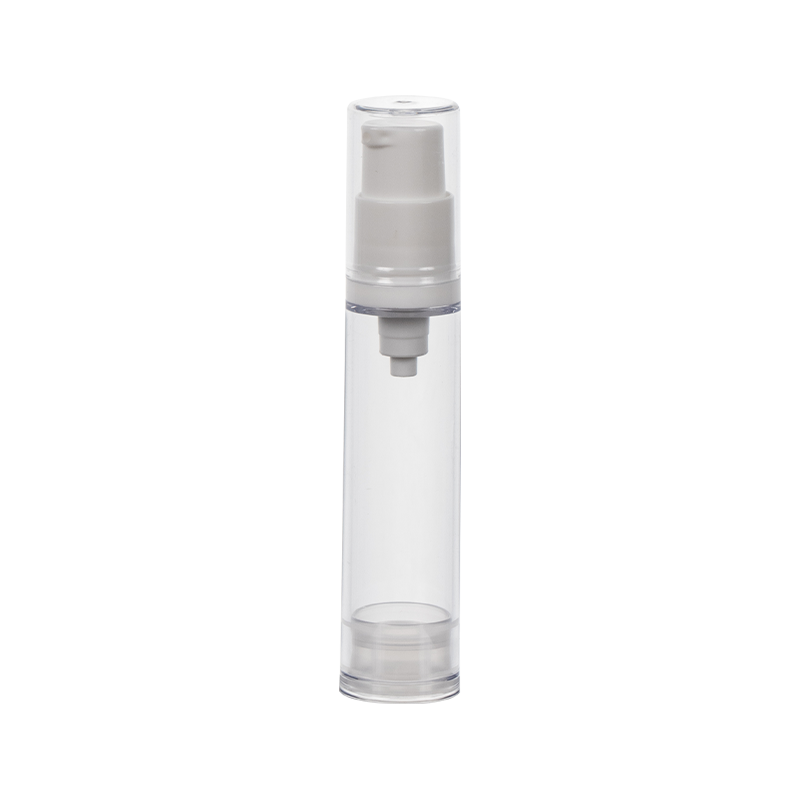How do airless pump bottles effectively extend the shelf life of cosmetics or skincare products?
Nov 12, 2024
In the packaging design of cosmetics and skin care products, how to maintain the freshness and efficacy of the product is a key issue. As consumers' requirements for product quality and safety increase, the innovation of cosmetic packaging has also continued to develop. Among them, Airless Pump Jar has become the choice of more and more brands due to its unique design and function. This packaging not only improves the user experience, but also effectively extends the shelf life of cosmetics and skin care products. This article will discuss in detail how airless pump bottles can effectively extend the shelf life of cosmetics or skin care products through their structural characteristics, avoid product oxidation and contamination, and thus ensure the best effect when consumers use them.
1. Prevent air contact: Reduce oxidation reaction
Oxidation is one of the main reasons for the deterioration of cosmetics and skin care products, especially those containing active ingredients such as vitamin C, plant extracts and antioxidants. Oxygen and airborne microorganisms contact will accelerate the oxidation process of the product, thereby reducing its effectiveness and may even cause the product to deteriorate.
The design of airless pump bottles has significant advantages in this regard. Unlike traditional bottled packaging, airless pump bottles use a sealed system to ensure that air cannot enter the bottle. During each use, the action of the pump head pushes the product in the bottle out through the pump tube, and the space in the bottle gradually decreases with use, but it always remains sealed. In this way, the contact between the product and the outside air is effectively isolated, thereby preventing the occurrence of oxidation reactions and maintaining the stability and efficacy of the product.
2. Prevent bacteria and contaminants from entering
In addition to oxidation, the invasion of bacteria and contaminants is also a common cause of deterioration of cosmetics and skin care products. During use, traditional containers are easily affected by the external environment, and hands touching the container opening may bring bacteria into the product, causing microbial contamination.
The closed design of the airless pump bottle effectively avoids this problem. During each use, the user takes the product through the pump head without directly contacting the contents of the bottle, thereby reducing the introduction of external contaminants and bacteria. This design can not only effectively improve the hygiene of the product, but also extend the service life of the product, ensuring that consumers have a cleaner and safer experience during use.
3. Maintain the stability of active ingredients
Many active ingredients in cosmetics and skin care products, such as vitamins, anti-aging factors, moisturizing ingredients, etc., are very sensitive to temperature, light and oxygen in the environment. Traditional open bottles are exposed to the outside environment during use, which may cause these ingredients to degrade or fail, thus affecting the effect of the product.
Airless pump bottles can effectively solve this problem. Its excellent sealing property avoids the influence of outside air, moisture and light, helping to maintain the stability of active ingredients. During the entire product use process, the active ingredients can maintain their efficacy for a longer time, ensuring that the effect of the product is the same as the initial effect each time it is used.
4. Reduce product waste
Traditional packaging bottles are prone to waste of cosmetics or skin care products during use. Especially for some viscous creams or face creams, users often need to squeeze the bottle hard, resulting in the inability to fully remove the remaining product in the bottle. Moreover, air contact and contamination problems often make the remaining product unable to continue to be used.
Airless pump bottles can effectively avoid this waste. Because the design of the pump head can squeeze out each drop of product evenly and accurately, consumers can better control the amount used, thereby avoiding excessive squeezing and waste. As the amount of product pumped out each time decreases, the contents of the bottle are completely squeezed out without residue, so that every drop of product is maximized.
5. Suitable for various formulas: a wider range of applications
The airtightness and hygiene of airless pump bottles are not only suitable for skin care products and cosmetics containing high-efficiency ingredients, but also for special formulas that are easily contaminated. For example, some products containing natural ingredients may be more susceptible to the influence of external air and bacteria. The design of airless pump bottles can extend the shelf life of these products and ensure the safety and stability of the formula.
In addition, the design of airless pump bottles is also suitable for sensitive and professional skin care products, such as ointments, medicated creams, etc. These products have more stringent requirements for the environment and must ensure pollution-free and freshness.
6. Environmental protection and sustainability
With the popularization of the concept of sustainable development, more and more consumers have higher requirements for the environmental protection of packaging materials. The refillable design of airless pump bottles just meets this demand. Consumers can refill the bottle as many times as needed, reducing the generation of plastic waste and contributing to environmental protection.
At the same time, many airless pump bottles are made of recyclable or biodegradable materials, which helps to reduce the burden on the environment. Compared with traditional disposable containers, choosing airless pump bottles not only helps to extend the shelf life of products, but also promotes the popularization of environmentally friendly packaging.


 English
English 中文简体
中文简体












